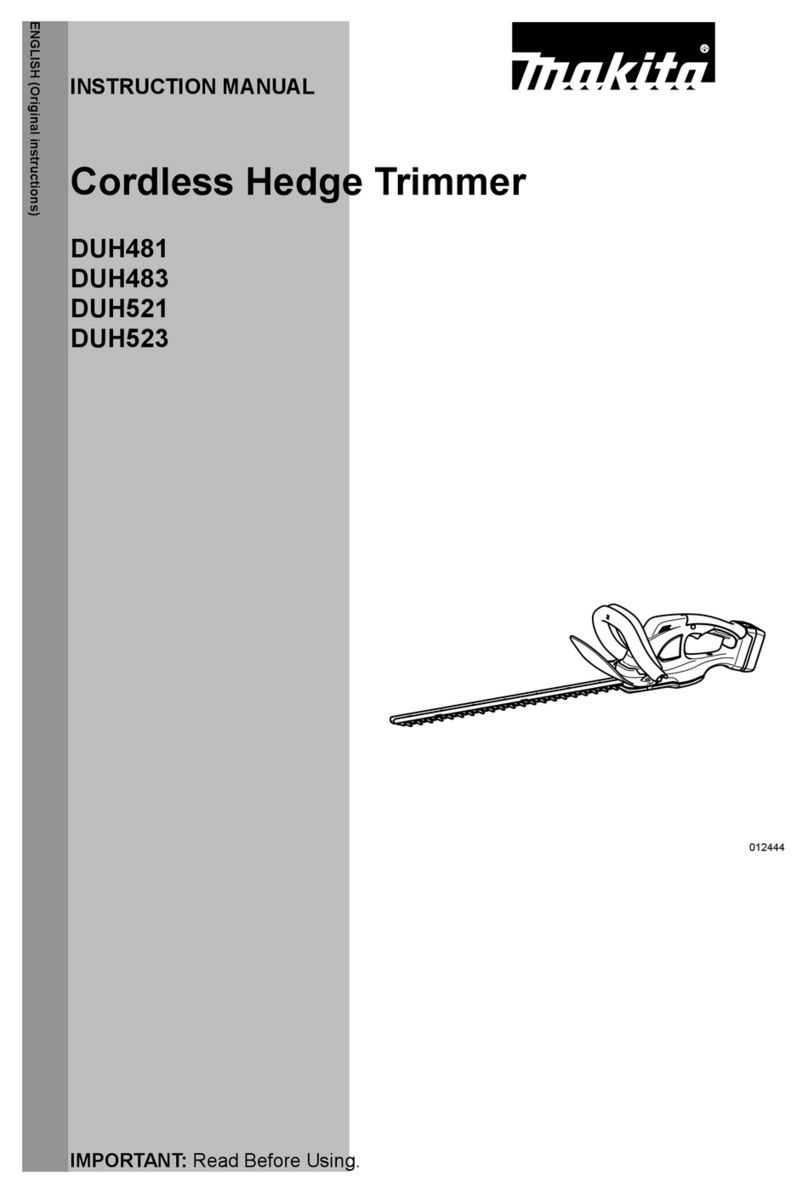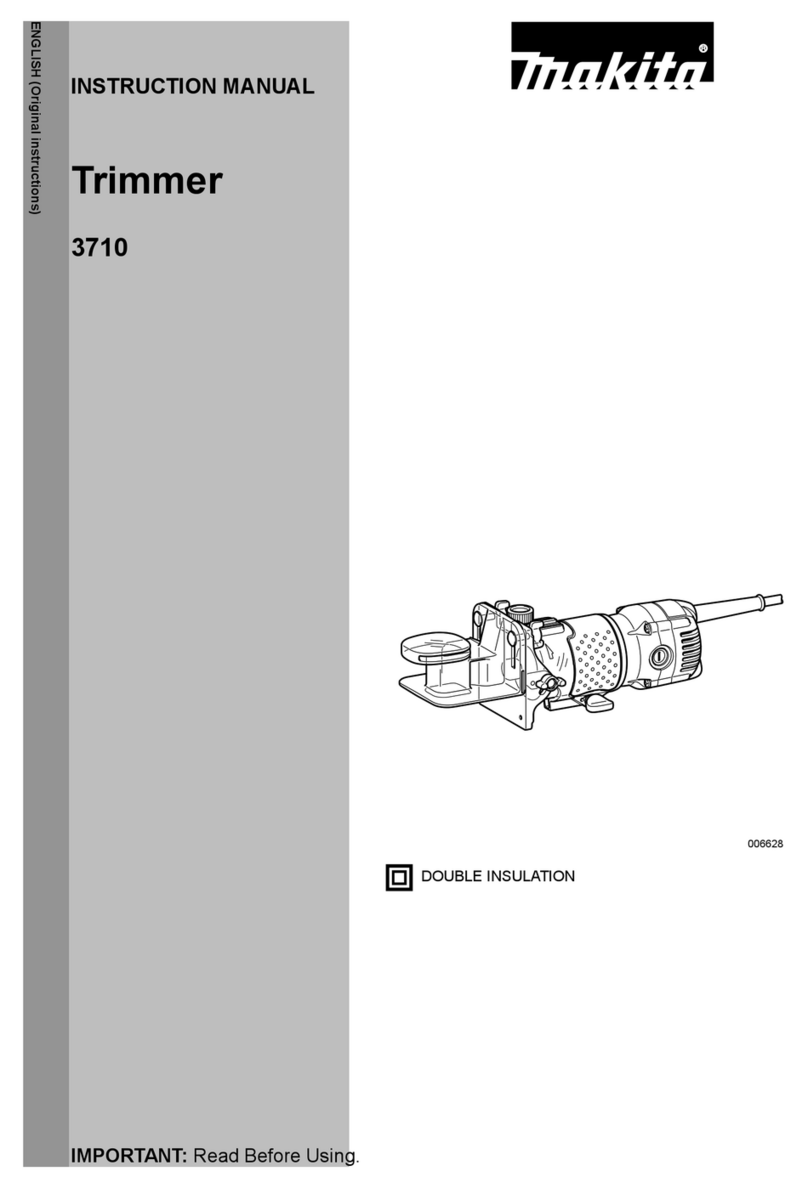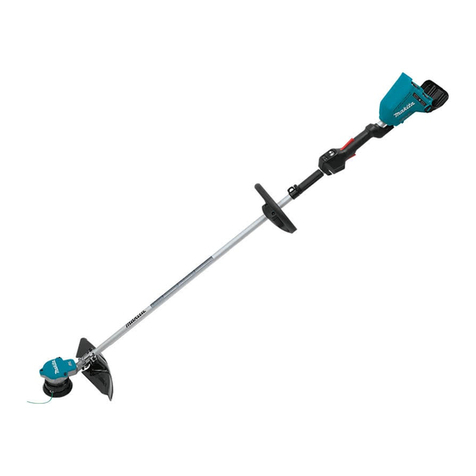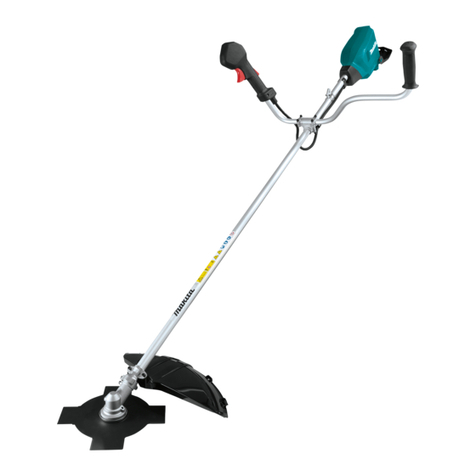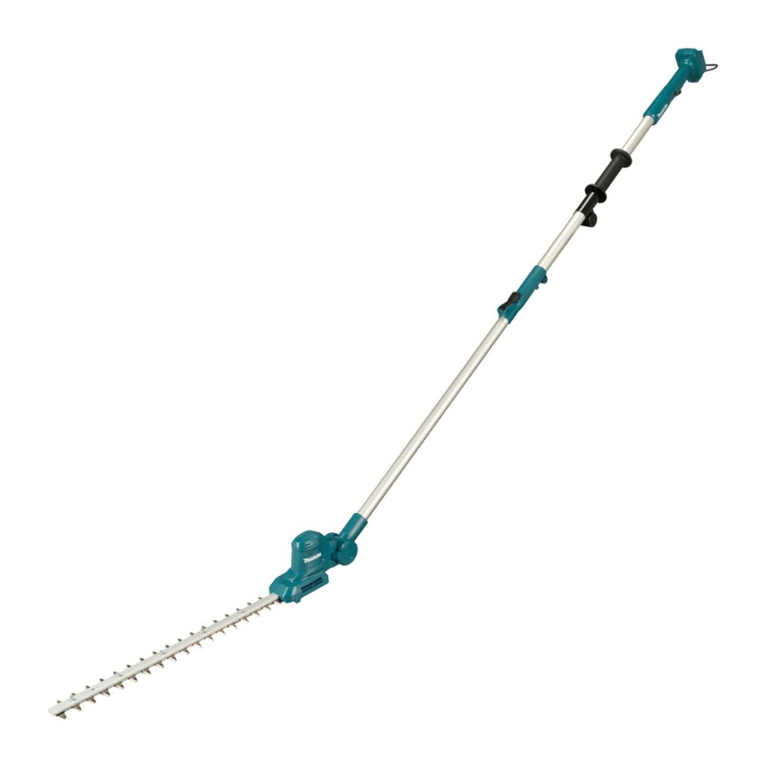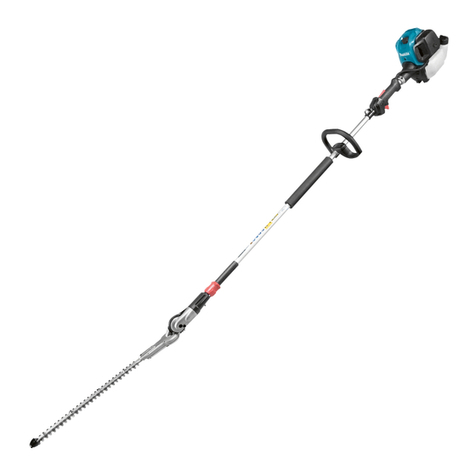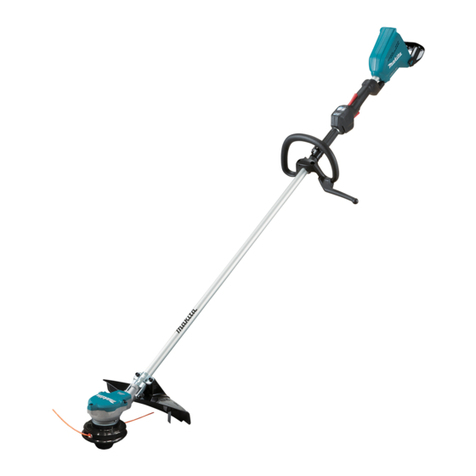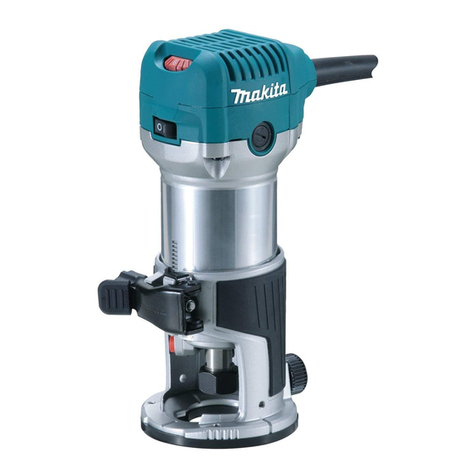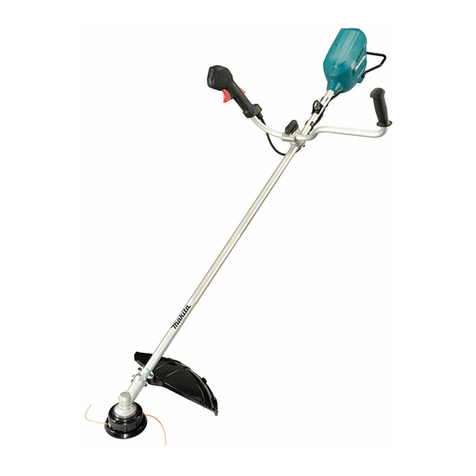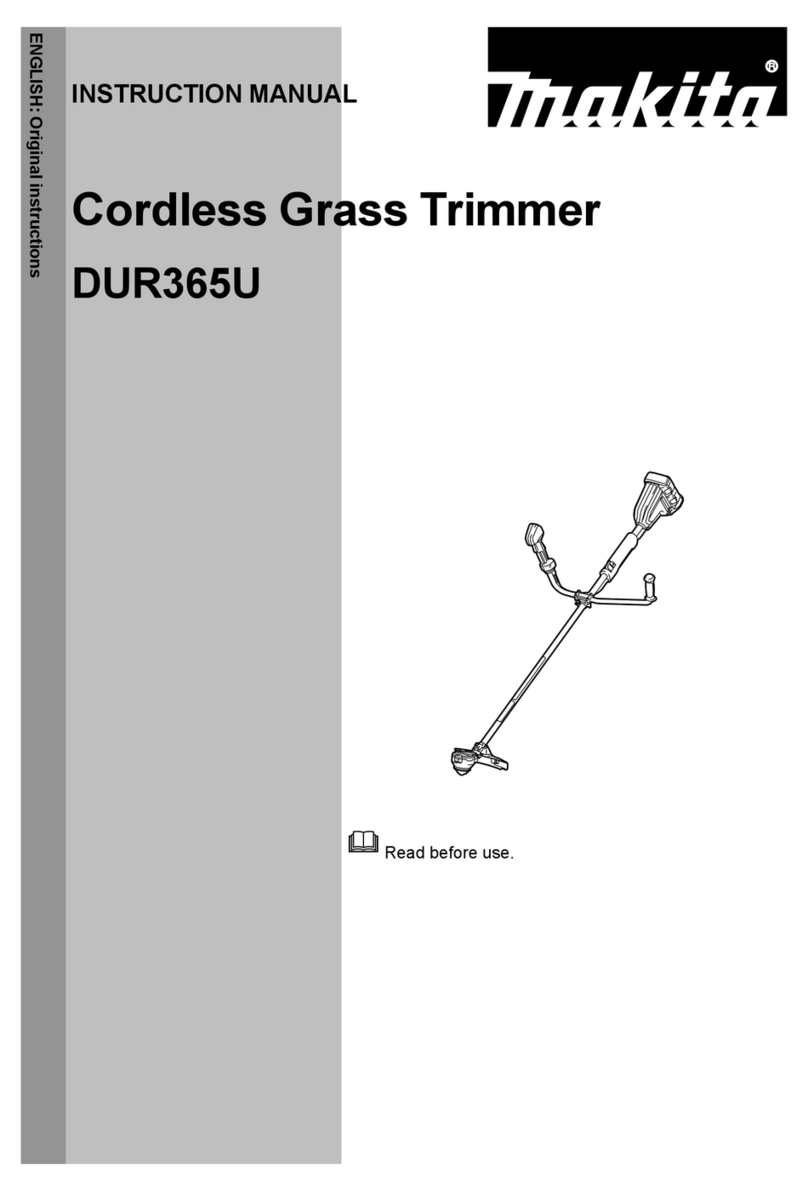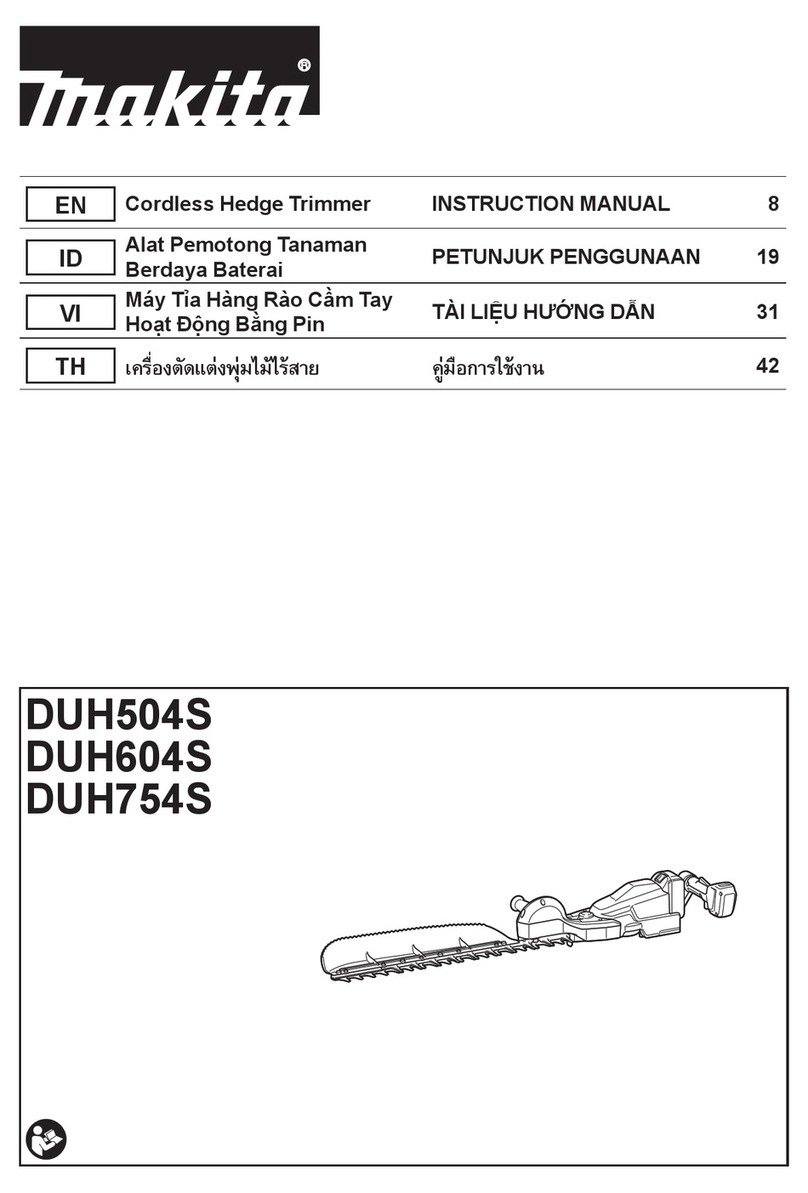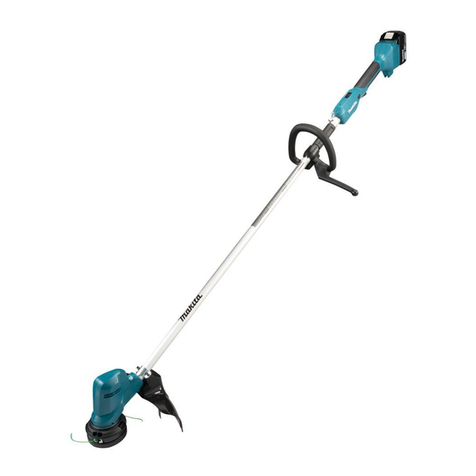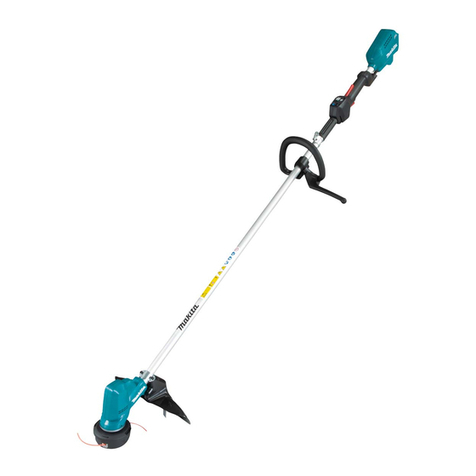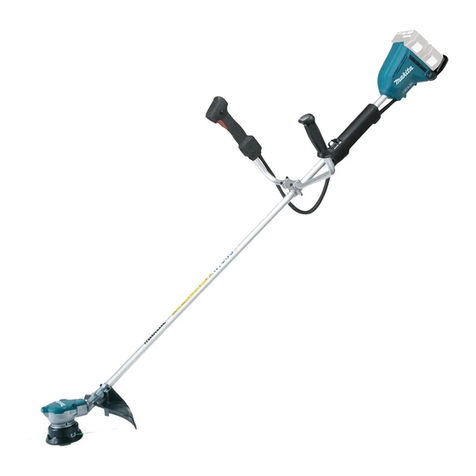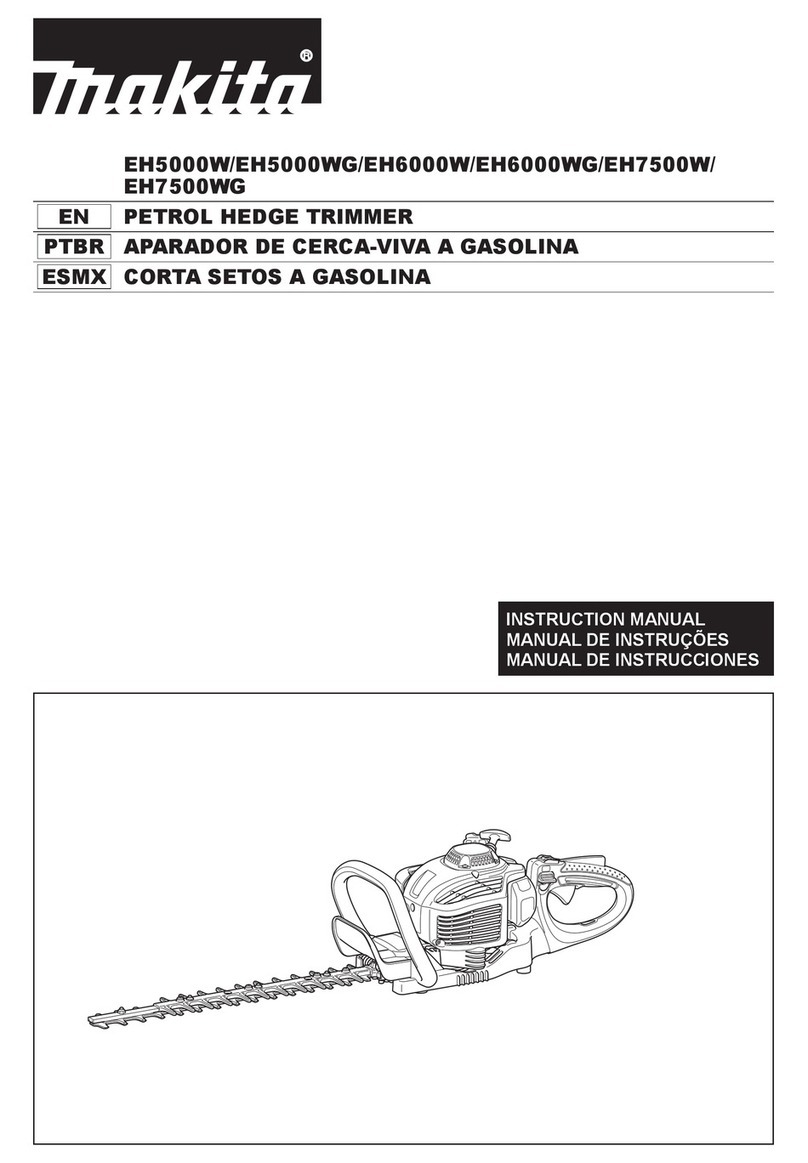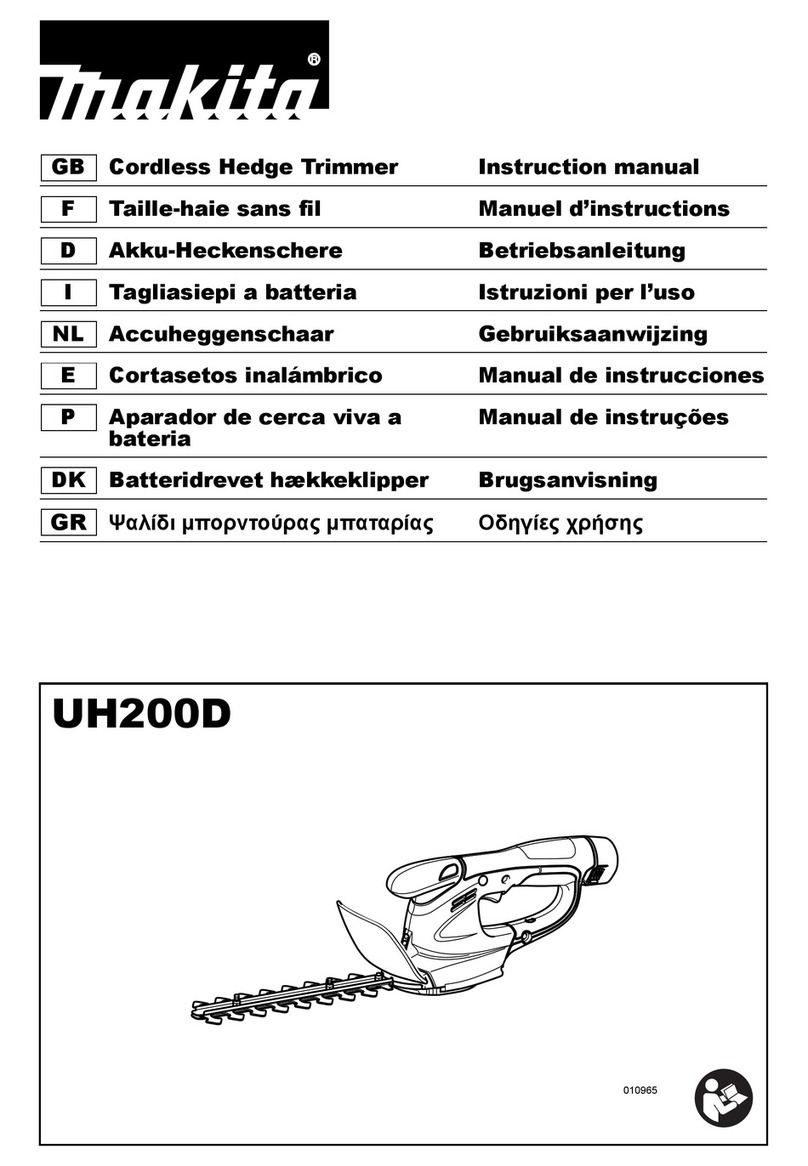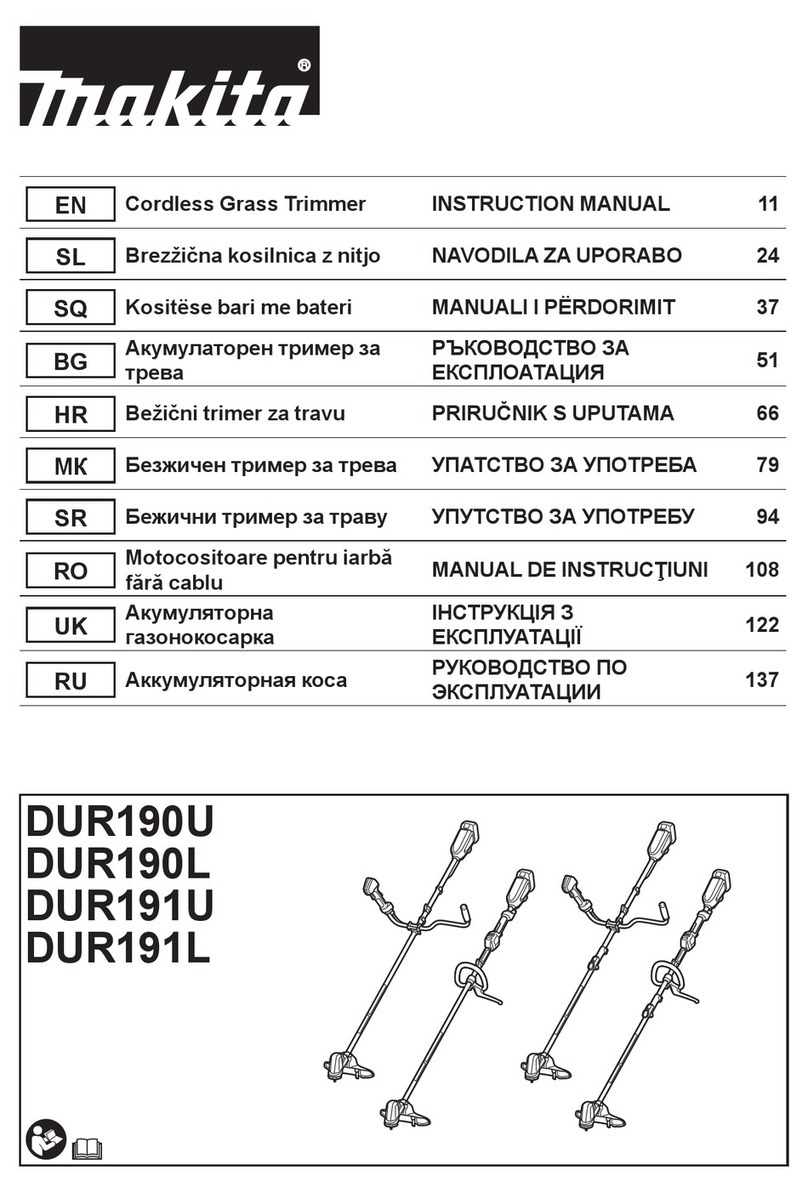4
7. Beware of overhead power lines.
8. Avoid operating while people, especially children,
are near by.
9. First-time users should have an experienced user
show them how to use the tool.
10. Before operation, examine the work area for wire
fences, stones, or other solid objects. They can
damage the blades.
Personal protective equipment
11. Wear protective goggles, safety helmet and
protective gloves to protect yourself from flying
debris or falling objects.
12. Wear ear protection such as ear muffs to prevent
hearing loss.
13. Wear proper clothing and shoes for safe
operation, such as a work overall and sturdy, non-
slip shoes.
14. When touching blades or adjusting the blade
angle, wear protective gloves. Blades can cut
bare hands severely.
Operation
15. Use right appliance. Do not use appliance for any
job except that for which it is intended.
16. In the event of an emergency, switch off the tool
and remove the battery cartridge immediately.
17. If cutting tool strikes any object or the tool starts
making unusual noise, switch off the tool and
remove the battery cartridge immediately and
allow the tool to stop. And then take the following
steps:
−inspect for damage
−check for, and tighten, any loose parts
−have any damaged parts replaced or
repaired with genuine spare parts.
18. Switch off the tool and remove the battery
cartridge before leaving the tool unattended.
19. Be careful not to accidentally contact a metal
fence or other hard objects during operation. The
blade will break and may cause serious injury.
20. Avoid dangerous environment. Do not use
appliances in damp or wet locations.
21. While operating the tool, always ensure that the
operating position is safe and secure.
Overreaching with the tool, particularly from a
ladder, is extremely dangerous. Do not work from
anything wobbly or infirm. Do not over reach.
Keep proper footing and balance at all time.
22. Avoid unintentional starting. Do not carry the tool
when the battery cartridge is installed and with
finger on switch. Be sure switch is off when
installing the battery cartridge.
23. Do not grasp the exposed cutting blades or
cutting edges when picking up or holding the tool.
24. Do not operate the tool with a damaged or
excessively worn cutting device.
25. Always ensure that all handles and guards are
fitted when using the tool. Never attempt to use
an incomplete tool or one fitted with an
unauthorized modification.
26. Always use two hands to operate the tool fitted
with two handles. Hold the tool firmly when using
the tool. Using one hand could cause loss of
control and result in serious personal injury.
27. Hold the power tool by insulated gripping
surfaces only, because the cutter blade may
contact hidden wiring. Cutter blades contacting a
"live" wire may make exposed metal parts of the
power tool "live" and could give the operator an
electric shock.
28. Do not force the tool. It will do the job better and
with less likelihood of a risk of injury at the rate for
which it was designed.
29. Always be aware of your surroundings and stay
alert for possible hazards of which you may not
be aware due to the noise of the tool. Watch what
you are doing. Use common sense. Do not
operate the tool when you are tired.
30. Do not use the tool in the rain or in wet or very
damp conditions. The electric motor is not
waterproof.
Maintenance and storage
31. When the tool is stopped for servicing, inspection
or storage, switch off the tool and remove the
battery cartridge, and make sure all moving parts
have come to a stop. Allow the tool to cool before
making any inspections, adjustment, etc.
32. Always allow the tool to cool down before storing.
33. When transporting or storing the tool, always fit
the blade cover.
34. Store idle tool indoors. When not in use, the tool
must be stored indoors in dry, and high locked-up
place, out of reach of children.
35. Maintain the tool with care. Keep cutting edge
sharp and clean for best performance and to
reduce the risk of injury. Follow instructions for
lubricating and changing accessories. Keep
handles dry, clean, and free from oil and grease.
36.
Check damaged parts. Before further use of the tool,
any part which is damaged should be carefully
checked to determine that it will operate properly
and perform its intended function. Check for
alignment of moving parts, binding of moving parts,
breakage of parts, mounting and any other condition
that may affect its operation. A guard or other part
that is damaged should be properly repaired or
replaced by your authorized service center.
37. Use genuine spare parts only.
SAVE THESE INSTRUCTIONS.
